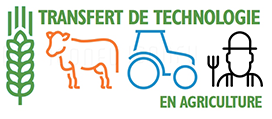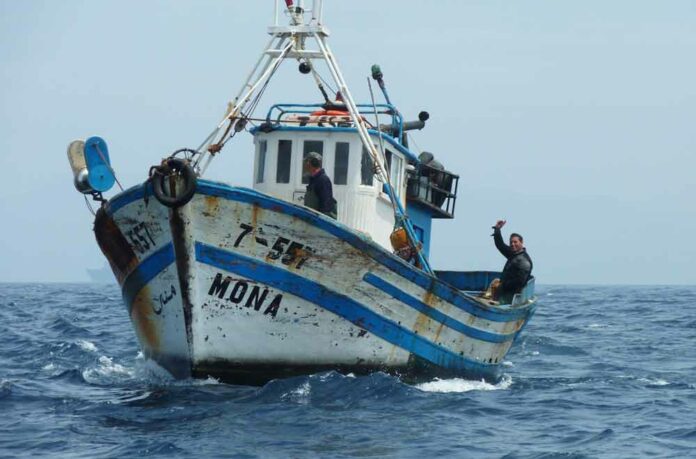RESULTS AND DISCUSSION
Spatial dynamic analysis of surveyed boats
The spatial dynamic of the studied boats is very important at the Centre and South of the Kingdom of Morocco. In fact, according to the socioeconomic surveys, these boats have made seasonal movements between different ports in this area following mainly the availability and abundance of resources. The analysis shows that 63 % of sampled vessels might frequent at least 3 to 4 ports/year throughout the Atlantic coast (Figure 2). For this, it is difficult to attribute a particular vessel to a given port.
In this context, it is useful to note that skippers possess good skills and experiences to achieve high catch yields based on their own knowledge of the most productive fishing areas. This is demonstrated by their ability to predict the direction of water current, wind conditions, detecting fish schools, setting nets and then encircling fish schools.
Market analysis of small pelagic
Small pelagic fishes have three principal markets, represented by: fish meal and fish-oil industry (54 %), canning industry (26 %) and fresh consumption market (16 %). Canning industry and fresh consumption market generate over than 60% of sales value (Figure 3). If we consider different target markets, the average price of the same species changes according to its destination. Thus, for example, fishes destined to the by-product factories, are sold at lower prices because of their low quality. In this category of fish, we find particularly sardine (0.85 MAD/kg), and at low degree anchovy, mackerel and round sardinella with an average price of about 0.92 MAD/kg.
Differences between prices of the same specie vary from one specie to another according to the targeted market (canning industry, freezing industry, by-product industry and fresh market). Highest differences, compared to those of other species, were observed for anchovy (Figure 4).
To increase wealth generated by small pelagic landings, we propose to:
a- Encourage modernization programs that:
- Aim to improve storage conditions on shipboard.
- Aim to increase production capacity for processing industries and creating new products with higher value-added.
b- Promote fresh fish consumption market, at the national level, through awareness campaigns on the importance of the nutritional values of small pelagic fish.
Analysis of the operating accounts
The 128 coastal purse seiners sampled are characterized, on average, by a tonnage of 78 GRT, an engine power of 410 HP, an age of 18 years and a crew of 36 people (Table 3).
As explained previously, and ignoring the labor cost which occupies about 59% of all costs, operating expenditures of coastal purse seiners can be divided into two main categories (Table 4 and Figure 5):
- The first category is related to the common costs (26 %) borne by the ship-owner and the crew members. In this category, we include all costs directly related to the fishing activity, namely for example, fuel (36 %), social security levies (38 %) and production taxes (14 %), etc.
- The second category is associated to costs borne only by the ship-owner (15 %). It includes all annual costs relating mainly to insurances (46 %) and repairs (31 %). After deducting the common costs and the share due to the crew, we obtain this second category of costs.
- The analysis shows that return on investment increases with the size of boats. Indeed, the return on investment goes from 0%, for small boats, with GRT ϵ [35-55[, to 9.2 % for large boats, with GRT>=95. The best performance (9.8 %) is evaluated for boats with GRT within the range of [75-95]. Likewise, the same trend was detected by the second indicator “return on revenue” that began from -0.1% for small boats, with GRT ϵ [35-55[, to 9.7 % for large boats, with GRT>=95. The maximum return on revenue (11.4 %) is calculated for purse seiners with GRT ϵ [75-95[. Average “return on investment” of the whole fleet is 6.1 %, that relating to “return on revenue” is 7 %.
Table 4 shows that the average value of the share increases significantly with the size of boats. This value goes up to threefold going from 15,100 MAD/year for small boats, with GRT ϵ [35-55[, to 43,500 MAD/year for large boats, with GRT>=95. This share value has a direct effect on the income of different crew members by class of boats. The analysis of the revenues structure by nature of work shows that the skipper income is the highest with an average of 139,000 MAD/year, this is due to the nature of the responsibility entrusted to him on vessel board (Figure 5).
Source sur Revue Marocaine des Sciences Agronomique et Vétérinaires et ficher PDF
https://www.agrimaroc.org


